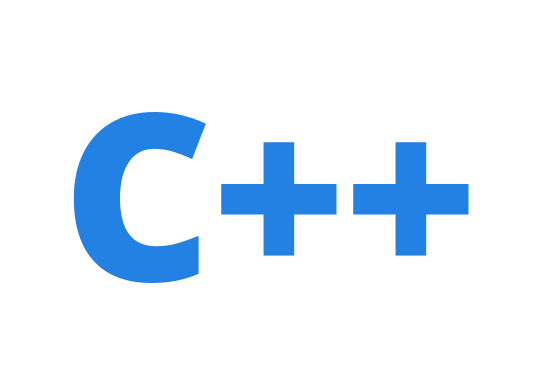C/C++排序篇-二叉排序树
前言
二叉排序树又称二叉查找树,二叉树排序树的所有左孩子的关键字都小于其父结点的关键字,所有右孩子的关键字都大于其父结点的关键字。
实现
查找过程:
二叉排序树非空时,将给定的关键字值与根结点的关键字值进行比较,若相等则查找成功,否则判断关键字小于或大于根结点,下一步到对应的左右子树进行查找。直到查找成功,如遍历到叶子结点,仍未查找到则该关键字不存在树中。
template<typename ElementType>
BTreeNode<ElementType>* BSTree<ElementType>::SearchBST(ElementType _value,BTreeNode<ElementType> **father)
{
BTreeNode<ElementType> *p=node;
*father=nullptr;
while (p&&p->elemValue!=_value)
{
*father=p;
if (p->elemValue>_value)
{
//左子树
p=p->lchild;
}
else if (p->elemValue<_value)
{
//右子树
p=p->rchild;
}
}
return p;
}
插入
根据输入序列构造二叉排序树,若排序树为空,则当前新增的元素作为树的根结点。若当前新增的元素大于根结点则插入到右子树中。若小于根结点的关键字则插入到左子树中。
template<typename ElementType>
void BSTree<ElementType>::Add(ElementType elem)
{
BTreeNode<ElementType> *newNode=new BTreeNode<ElementType>();
newNode->elemValue=elem;
lastAdd_Node=newNode;
if (node==nullptr)
{
node=newNode;
length=1;
return;
}
BTreeNode<ElementType> *tar_node=node;
BTreeNode<ElementType> *p;
BTreeNode<ElementType> **father=(BTreeNode<ElementType>**)malloc(sizeof(BTreeNode<ElementType>));
queue_Sequence<BTreeNode<ElementType>*> queue;
p=SearchBST(elem,father);
if (p)
{
return;//已经存在不再插入 ?是不是可以在BTreeNode中定义count字段。这样可以正确记录重复的数据在二叉排序中的位置。
}
if (*father!=nullptr)
{
if ((*father)->elemValue>elem)
{
//左子树
(*father)->lchild=newNode;
}
else if ((*father)->elemValue<elem)
{
//右子树
(*father)->rchild=newNode;
}
}
length+=1;
}删除结点:在二叉排序树中删除一个结点,不能直接删除,需要删除后仍使排序树保持特性。
删除分三种情况
- 要删除的是叶子节点。
要删除的是叶子节点就直接删除。 - 要删除的是节点有左子树或右子树。
则让其左子树或右子树直接接上其父节点。 - 要删除的节点同时具有左子树和右子树。
若要删除的左右子树均不空,则删除结点时应该将其左子树、右子树连接到适当的位置。可以采用*p中序直接前驱结点*_prior代替*p结点。因为这个中序直接前驱是左子树中最大的数。
同样中序直接后续也可以代替*p的位置使调整后的结构平衡。
还有一种调整思路:我们知道*p的左子树一定都小于*p,那么左子树一定都小于*p的右子树,那何尝不可以让*p右子树接入左子树里最大的那个节点(这里也就是前面说的*p的中序前驱),然后左子树的头去代替*p的位置。
这些方法思想其实差不多,这里代码示例中采用直观一点的‘*p中序直接前驱结点*_prior代替*p结点’。
template<typename ElementType>
void BSTree<ElementType>::Remove(ElementType elem)
{
//分为三种情况。
//1.要删除的是叶子节点。
//2.要删除的是节点有左子树或右子树。
//3.要删除的节点同时具有左子树和右子树。
BTreeNode<ElementType> *p;
BTreeNode<ElementType> *q;//要删除的节点
BTreeNode<ElementType> **father=(BTreeNode<ElementType>**)malloc(sizeof(BTreeNode<ElementType>));
p=SearchBST(elem,father);
if (!p)
{
return;
}
//查找到了
if (p!=nullptr)
{
bool haveLChild=p->lchild!=nullptr;
bool haveRChild=p->rchild!=nullptr;
if ((!haveLChild)&&(!haveRChild))
{
//1.要删除的是叶子节点。直接删除
if ((*father)->lchild==p)
{
(*father)->lchild=nullptr;
}
else if ((*father)->rchild==p)
{
(*father)->rchild=nullptr;
}
}
else if ((haveLChild!=haveRChild))
{
q=p;
//2.要删除的节点有左子树或右子树。
if (haveLChild)
{
//左子树
if ((*father)->lchild == p)
{
(*father)->lchild = p->lchild;
}
else if ((*father)->rchild == p)
{
(*father)->rchild = p->lchild;
}
}
else
{
//右子树
if ((*father)->lchild == p)
{
(*father)->lchild = p->rchild;
}
else if ((*father)->rchild == p)
{
(*father)->rchild = p->rchild;
}
}
}
else if (haveLChild&&haveRChild)
{
BTreeNode<ElementType> *_prior=p->lchild;
BTreeNode<ElementType> *_priorFather;
//找到左子树中最大的结点。即中序遍历*p时的直接前驱。用*p中序直接前驱结点*_prior代替*p结点
while (_prior->rchild)
{
_priorFather=_prior;
_prior=_prior->rchild;
}
if (p->lchild!=_prior)
{
_priorFather->rchild=_prior->lchild;//将prior的左子树接prior父节点的右子树上,即接到prior位置上。
}
else
{
//如果左子树没有右子树,那么就把左子树的左子树接到*p的左节点上。
p->lchild=_prior->lchild;
}
//*p右子树接入*p的_prior直接前驱
p->elemValue=_prior->elemValue;
q=_prior;
}
}
if (q)
{
delete(q);
q=nullptr;
}
}经过多次的对二叉排序树进行调整,二叉排序树形态发生了变化,查找效率会有所降低。所以我们想要让二叉排序树尽量保持平衡,于是提出了平衡二叉树的概念。这个我们下次再讲!
C/C++平衡二叉树 - 麦瑞克博客 (playcreator.cn)
示例下载

来源:诚通网盘 | 提取码:unitymake
作者:Miracle
来源:麦瑞克博客
链接:https://www.playcreator.cn/archives/programming-life/datastruct/3119/
本博客所有文章除特别声明外,均采用CC BY-NC-SA 4.0许可协议,转载请注明!
来源:麦瑞克博客
链接:https://www.playcreator.cn/archives/programming-life/datastruct/3119/
本博客所有文章除特别声明外,均采用CC BY-NC-SA 4.0许可协议,转载请注明!
THE END
2
打赏
海报


C/C++排序篇-二叉排序树
前言
二叉排序树又称二叉查找树,二叉树排序树的所有左孩子的关键字都小于其父结点的关键字,所有右孩子的关键字都大于其父结点的关键字。
实现
查找过程:
……

文章目录
关闭




